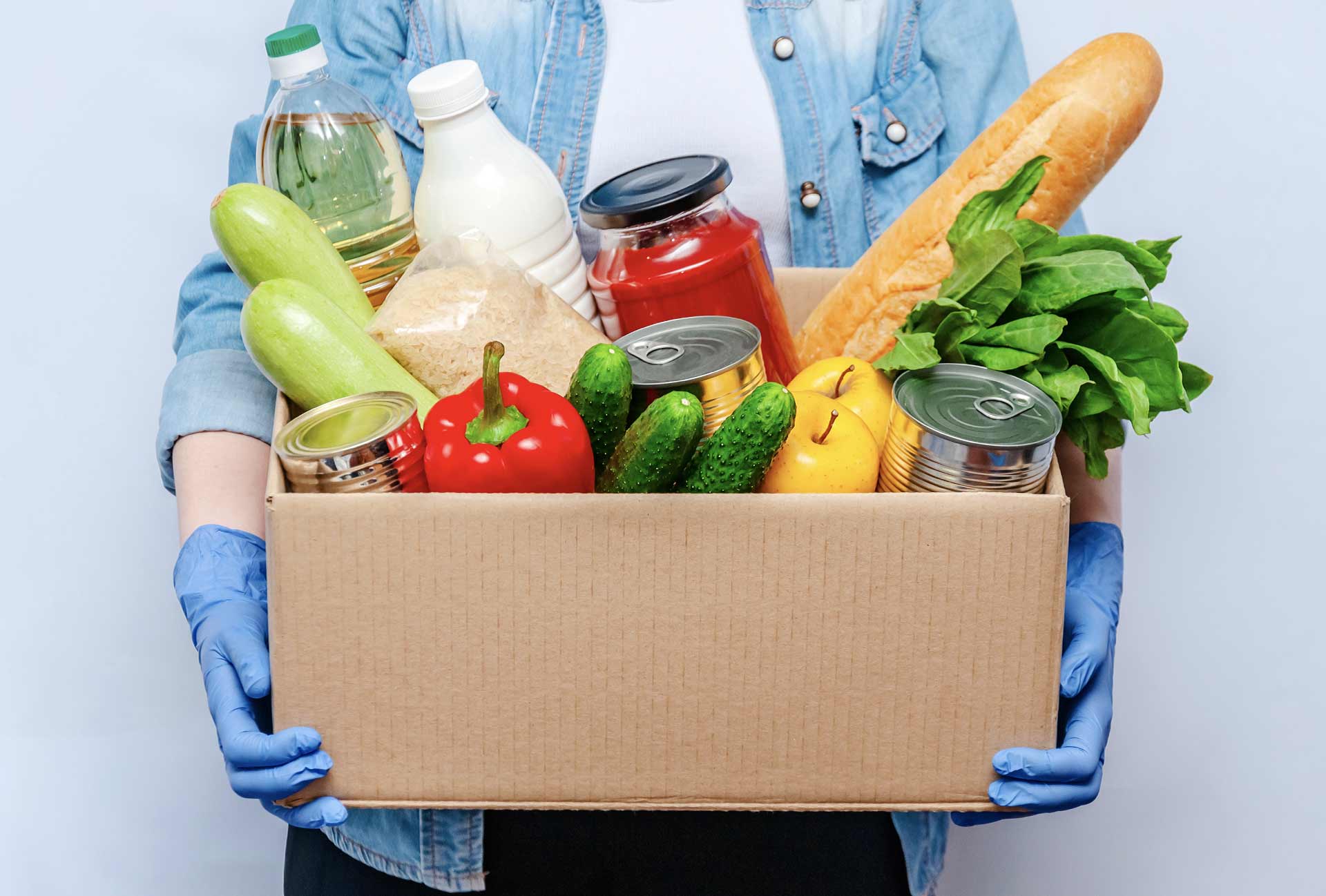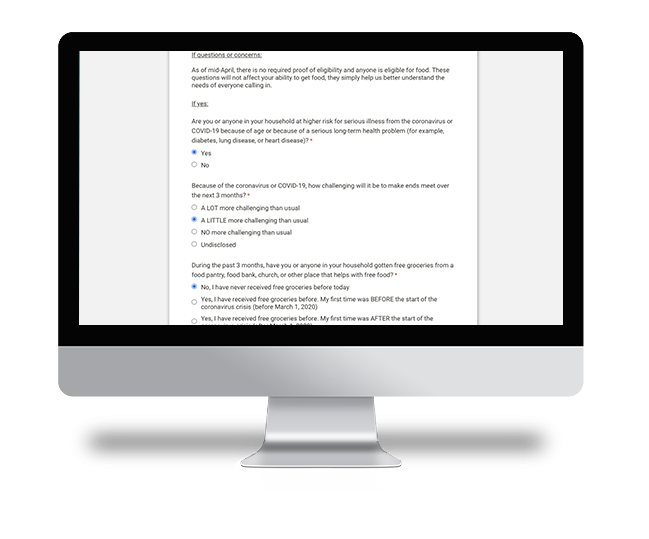

The numbers
31
drive-up distributions
3,269
individual food recipients
10 million+
pounds of food delivered to the community
Use cases
Find Food hotline form
Internal form that staff use when collecting information from callers who need assistance
The COVID-19 crisis initiated a shift in distribution models, and the Food Bank began to take on a higher volume of calls from those who were homebound and/or at-risk. Going the extra mile during this time meant assigning three additional staff members to monitor the phone lines, receive requests and process home delivery needs through a FormAssembly form.
In this use case, there is very little additional training that has to take place with end users. The focused use case and the ability to use Form Assembly’s form builder made the internal process easy to pick up and use right away, which is vital in the midst of a high-needs time.
The current internal form works by creating a new contact record and opening up to six reservation service records for an individual or household. This allows the organization to provide a home delivery service while monitoring every piece of data coming into Salesforce.
Features like repeating sections and Salesforce object aliases, which offer dynamic form field recommendations for form users, allow for easy consolidation and visibility.

Don’t just collect data
— leverage it.
